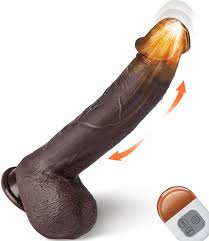How to Safely Clean Dryer Lint Traps: Houston Homeowners’ Guide
Dryers are essential in most Houston households, but one simple task often goes unnoticed—cleaning dryer lint traps. A neglected lint trap can reduce performance, increase energy bills, and pose a serious fire hazard. According to the U.S. Fire Administration, nearly 2,900 home dryer fires are reported annually, with lint buildup being the leading cause. This guide explains why Cleaning Dryer Lint Trap is critical for Houston homeowners and how to do it safely.
Why Cleaning Dryer Lint Traps Matters
Lint is made of fabric fibers shed from clothes during the drying cycle. The lint trap collects most of it, but over time it clogs. This blockage reduces airflow, forces your dryer to work harder, and can lead to overheating or fires. Houston’s humid climate places added strain on dryers, making regular lint trap maintenance even more important. Clean traps reduce drying time, lower energy bills, and extend the life of your appliance while improving indoor air quality.
“Lint accumulation is one of the most preventable causes of home fires. A clean lint trap not only protects your appliance but also your family.”
How to Clean Dryer Lint Traps Safely
Step 1: Turn Off the Dryer
Unplug the dryer or switch off the circuit breaker to avoid electrical accidents.
Step 2: Remove the Lint Screen
Open the dryer and gently pull out the lint screen, usually found inside the door or on top of the machine.
Step 3: Clean the Screen
Use your hands or a soft brush to remove lint. Wash the screen in warm, soapy water once a month to remove fabric softener residue.
Step 4: Vacuum the Lint Trap Housing
Use a vacuum with a narrow attachment to clean inside the cavity where the lint trap sits.
Step 5: Inspect for Buildup
Use a flashlight to check for remaining debris. If you see deep lint buildup, consider a professional cleaning service.
Dryer Vent Maintenance in Houston
In addition to Cleaning Dryer Lint Trap, Houston homeowners should pay attention to dryer vent maintenance. Lint also accumulates in the exhaust vent that carries air from your dryer to the outside. Over time, this buildup restricts airflow and can lead to overheating or fire.
Dryer vent maintenance in Houston should be done annually or more frequently for older homes or homes with long, winding ductwork. Professional technicians use special brushes and vacuum systems to remove deep lint and ensure proper airflow.
How Often Should You Clean?
| Task | Frequency | Reason |
|---|---|---|
| Remove lint from screen | After every use | Prevents airflow restriction |
| Wash lint screen with soapy water | Monthly | Removes residue from dryer sheets |
| Vacuum lint trap cavity | Every 3 months | Reduces hidden fire hazards |
| Clean entire dryer vent | Annually (minimum) | Prevents duct buildup and fire risk |
Common Mistakes Houston Homeowners Make
Skipping Regular Cleaning
Letting weeks go by without removing lint leads to serious blockages and reduced dryer performance.
Overloading the Dryer
Filling your dryer beyond capacity leads to restricted airflow and excess lint.
Using Too Many Dryer Sheets
Dryer sheets leave a waxy residue that clogs the lint screen.
Assuming One Cleaning Is Enough
High-usage households in Houston may require more frequent cleaning, especially during rainy seasons.
Additional Dryer Safety Tips
- Check the exhaust vent flap outside your home regularly to ensure it opens while the dryer runs.
- Use metal dryer ducts instead of plastic or foil for better fire resistance.
- Keep the area around your dryer clear of dust and flammable objects.
- Have a professional inspect your dryer if clothes take longer to dry or feel too hot.
Signs Your Lint Trap Needs Immediate Cleaning
- Clothes take longer than usual to dry
- A burning smell during or after drying
- Visible lint buildup around the dryer
- The laundry room feels unusually warm or humid
Why Cleaning Dryer Lint Trap Is Worth It
Cleaning Dryer Lint Trap is a simple habit with major benefits. It prevents fires, cuts energy costs, and keeps your appliance running longer. In a climate like Houston’s, where dryers are used year-round, staying on top of this task is essential.
Make it part of your regular home maintenance. Combine it with professional dryer vent cleaning for complete peace of mind.
Conclusion
Houston homeowners can protect their property, reduce energy costs, and avoid hazards by learning how to safely clean dryer lint traps. With just a few minutes
of regular maintenance, you extend the life of your dryer and create a safer, more efficient laundry routine. Prioritize Cleaning Dryer Lint Trap as a key step in home safety and appliance care.
Read More: Houston Dryer Vent Cleaning













